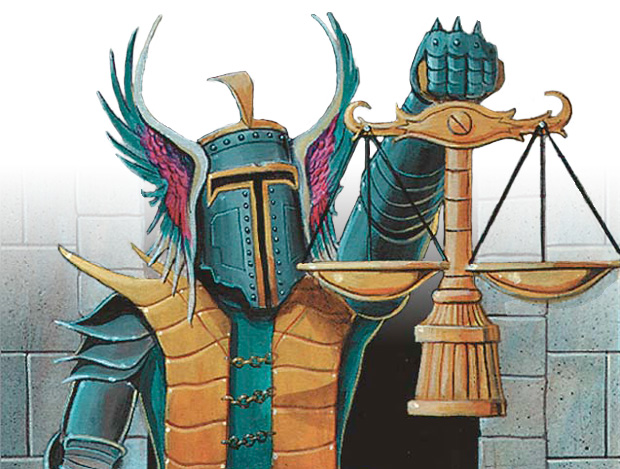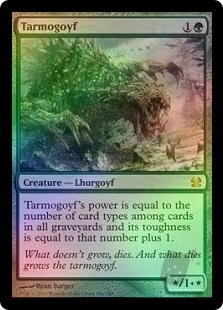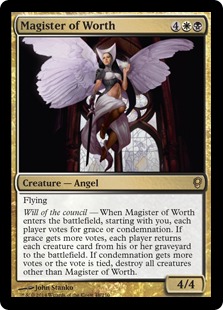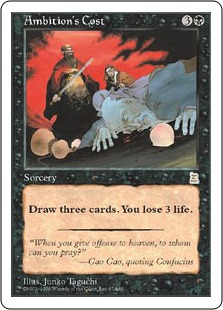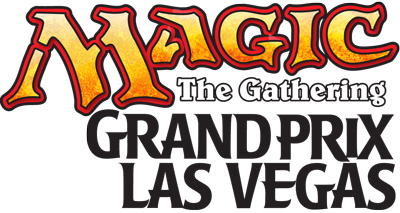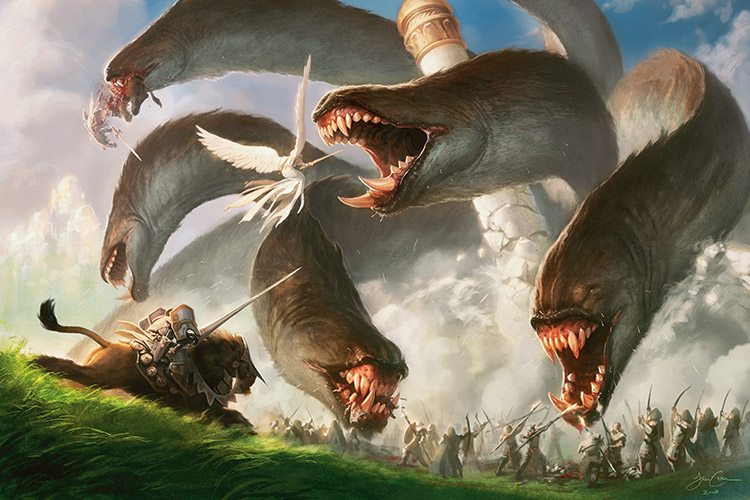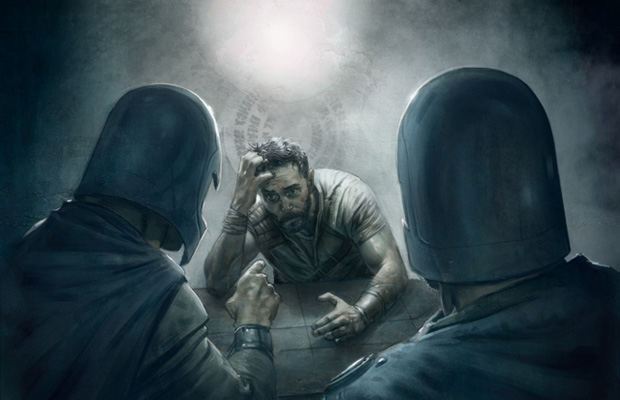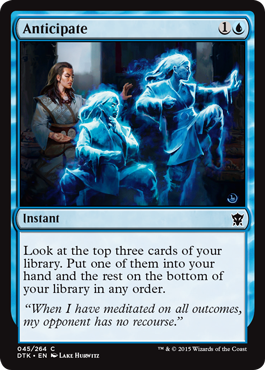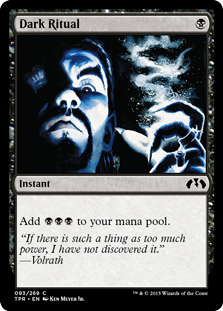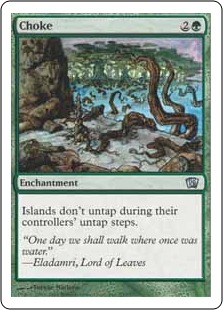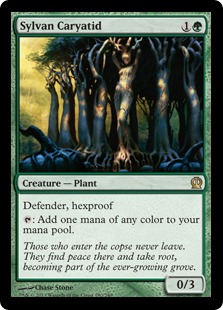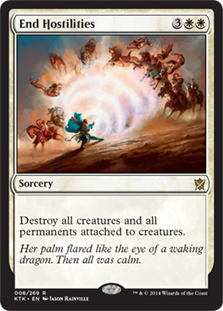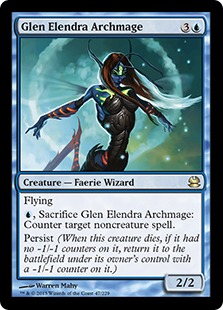I’m just going to come out and say it: I’m not a fan of Modern Masters 2015.
The funny thing is that I should be the target market for this product: a Limited enthusiast who is willing and able to pay a bit more to enjoy drafting a more-complex-than-normal (meaning better-than-normal) set with the opportunity to pick up sweet cards for my cube or open insanely expensive eternal staples.
So what’s the problem?
Lottery Tickets
Think of your worst-case scenario in a draft. Most versions of this scenario would be something along the line of opening no cards of value and losing in the first round. Consider that in an eight-man pod, four players will lose their first match. Even (probably generously) saying that two of those players opened cards worth more than the price of the packs for drafting, that means that 25 percent of drafters got to play one round (and are probably frustrated due to a loss) and opened no cards of value.
Obviously, being a good Limited player means that you probably won’t see this scenario a full 25 percent of the time, but still, even the best drafters are going to have nights where the whole thing just goes to hell and they end up with less money, bulk commons, and the annoyance of losing early.
Normal drafting usually costs between $10 and $15. That’s not an insignificant amount of money, but it’s also not enough to really lose sleep over (and if it is, you probably shouldn’t be drafting. Find someone with a cube for your Limited fix). When it comes to drafting a normal set, I have made the conscious decision that I am willing to risk $12 (my LGS’s price) for the chance to gamble on some packs for a money rare, draft some cards, play at least one round of Magic, and hopefully win some prizes. Everyone’s line on this is different, of course, but to me, the upside of a perfect draft is worth the downside of losing $12 and experiencing the frustration of a worst-case draft.
The First Modern Masters
I drafted the first Modern Masters four times (in paper MTG), paying $40 cash each time for the privilege. That’s $160 I spent on 12 packs of the set.
I pretty much had my worst-case scenario happen in all four of these drafts: I didn’t open the top cards and I lost in the first round of all but one draft (and did not win that fourth one). To this day, two years later, I regret spending so much on those drafts, but due to the nature of the first Modern Masters, the worst-case scenario wasn’t as bad as it could have been.
Here’s an incomplete list of cards that I did end up with after these four drafts. I wish I had written everything down, but I did not, so this is just based on my memory:
- 4x Spell Snare
- 2x Kitchen Finks
- 2x Path to Exile
- 1x Pact of Negation
- 1x Summoner’s Pact
- 1x Maelstrom Pulse (foil)
- 1x Knight of the Reliquary
- 1x Angel’s Grace
- 1x Woodfall Primus
- 1x Kodama’s Reach (foil)
- Some number of Electrolyze
- Some number of Trygon Predator
- Some number of Lava Spike
- Some number of Rift Bolt
None of these cards are the type of thing you open and pump your fist about (at least when you consider some of the mythics in this set), but added up over four drafts, these did a lot of work to help me not feel completely morose about “wasting” $160 on what turned out for me to be highly unsatisfying drafts.
The New Modern Masters
Despite my bad experience with the first Modern Masters, I was looking forward to Modern Masters 2015 and eager to actually win some drafts this time.
Then the set was fully spoiled.
Travis Allen did a great job covering what is also my biggest problem with the design of Modern Masters 2015 as a premium product designed to be a higher-cost alternative to normal drafting. This is the part that stuck out most to me:
The result here is that while half the rares you opened last time just about covered the cost at MSRP, this time only a quarter of them are going to. That puts us a lot closer to the Dragons of Tarkir ratio than the Modern Masters ratio.
The first Modern Masters had cards like Kitchen Finks, Spell Snare, Lava Spike, and a number of other powerful and fairly valuable uncommons and commons that you could be fairly certain would be available several picks into each pack. You didn’t have to open a rare to make at least some value back from your draft.
In Modern Masters 2015, there are a few powerful uncommons and commons, but most of the value is packed in the rare slot of one in every eight packs, since the mythics are where most of the money in Modern Masters 2015 lies.
With the first Modern Masters, someone with a good understanding of cards values could easily take $10 or more from a draft, even if she didn’t open anything in her three boosters. This is largely unprecedented in the world of drafting, where your financial success is often hit or miss—you tend to open one or two cards of value, or you get a bunch of worthless junk with maybe a Standard-playable uncommon.
Modern Masters 2015 leans more toward this second model: you either win big or you lose badly, and the entry fee here is 250 percent the normal price. The fact that a fraction of a fraction of a percent will open a foil Tarmogoyf is cool, but the downside is the same as for a normal set—completely whiffing on cards of value and ending up with only bulk.
Breaking It Down
As the above quote from Travis said, you have a 25 percent of opening a rare that will cover your cost of entry. Note that the cost of entry is $10, and that many of these rares are going to be heading south of that very quickly. Primeval Titan (a mythic) is barely above the pack price as is, given it’s three previous printings. Daybreak Coronet‘s previous value stems from one deck that wants it and there being virtually no supply—an influx of supply should crash it very quickly. How many copies of Splinter Twin, Fulminator Mage, and Spellskite does the market really need? All of these cards are on their way down to varying degrees. In fact, with very few exceptions, Modern Masters 2015 packs include mostly cards that are going down in value for the foreseeable future. That just doesn’t seem that attractive to me at $10 a pack.
Consider now the top eight non-rares in the set based on TCGplayer mid:
- Remand
- Electrolyze
- Lightning Bolt (at uncommon)
- Smash to Smithereens (a common)
- Dismember
- Cranial Plating (at uncommon)
- Vines of Vastwood
- Thoughtcast
First of all, the cards at the bottom of this list aren’t even worth a dollar. Second, half of the above cards (Smash, Plating, Vines, and Thoughtcast) are for highly specialized decks, meaning their financial upside is inherently capped. Lightning Bolt at uncommon makes a lot of sense for Limited, but it means players are less likely to get one in their drafts, and it’s not like a card with this many printings is going to have a huge upside despite being at uncommon here.
Only Remand is truly exciting among the non-rares in this set. If you whiff on your rare and foil in each pack, then you have a very limited chance of making back much if any value from the cards passed to you. Compare this to my Modern Masters 2013 pickings listed above, which were almost exclusively passed to me. Modern Masters 2015 just doesn’t compare, and to me, it’s not worth the high cost of entry.
There Is an Alternative
I’m reminded of George Orwell’s take on lotteries from 1984, where the lottery was used as a means to control the masses through providing distraction and false hope.
Look, I understand the thrill of opening a booster pack and hoping to find something highly valuable. That very thrill is the reason that I mainly play Limited, and my love of valuable cards naturally led me to MTG finance. I have drafted sets multiple times with virtually no good cards because I love cracking boosters. The difference is that those boosters were $4 or less.
The ceiling for Modern Masters 2015 is well worth $40 a draft (I’m assuming you’re paying for a prize pack, as well), but the floor is not. Again, each of us will have our own lines, but I find the idea of dropping $40 on a draft and having the worst case happen to be completely untenable.
So what’s my solution? I’m just not going to draft the set. I think Wizards overshot with the MSRP while simultaneously making the set worse value than its predecessor. Sure, I would love to crack some packs, but I’m expressing my dissatisfaction with this product with my wallet. (I may reconsider on Magic Online, where the MSRP is the $6.99 of the original Modern Masters.)
Do I think you should skip the set? Only if you agree with what I’ve written here. I’m not trying to be an anti-Modern Masters 2015 activist here. If you feel like it’s worth gambling with your $40ish dollars on some packs of the set, by all means, do so!
But if you have any way convinced yourself that this set is good value and that you as a financier or player must be cracking packs to get in on the action, I suggest you reconsider your position. There’s a lot of places you can put your money, and randomized packs at $10 a piece just doesn’t seem like your best bet. You can do better. This is no different from any other set: if you’re looking for specific cards, just buy them. Booster packs are bad value, and Modern Masters 2015 are in the same boat as all the others.
